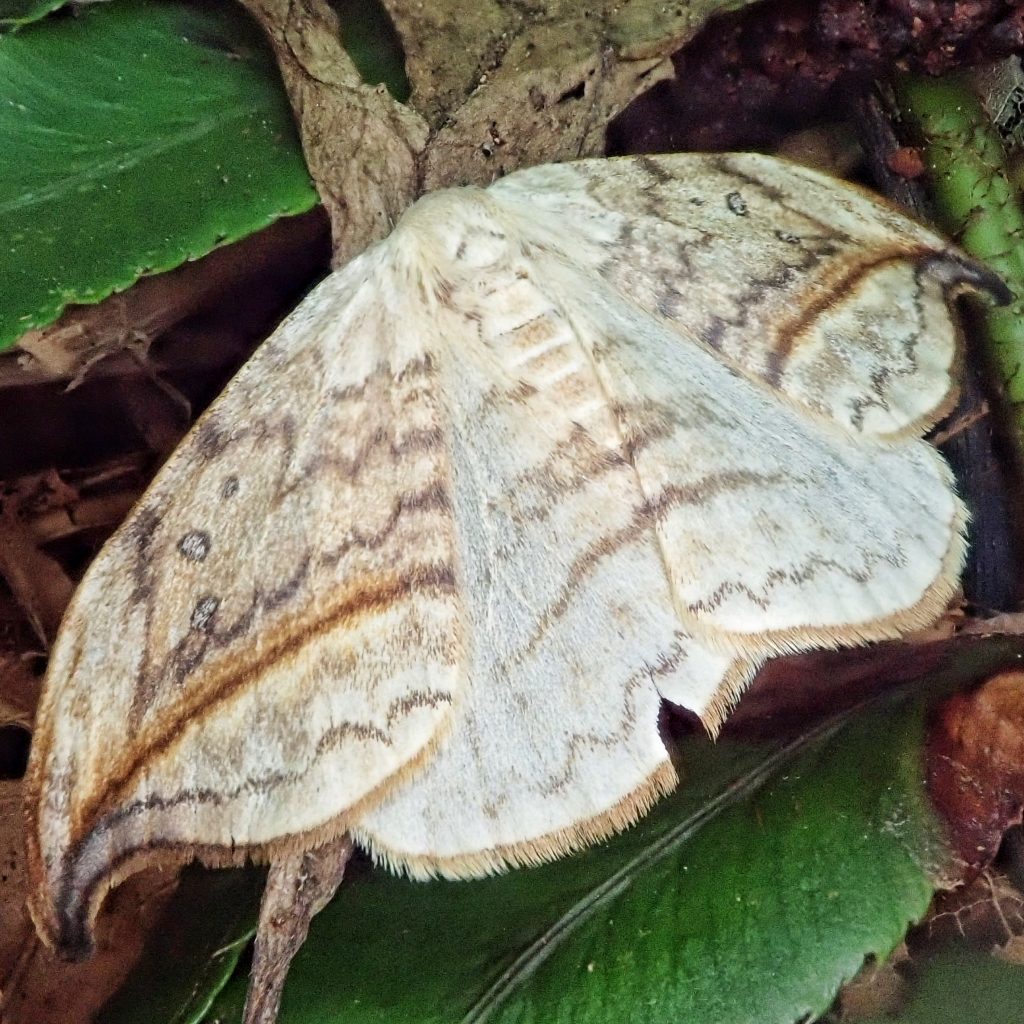
It is always a treat to find these members of the family Drepanidae, with their distinctive and unusual hooked forewings made even more striking by that bold brown line extending into the apex. They are not uncommon visitors to my lights in good habitat, although this was the first time I had ever seen one in daylight.
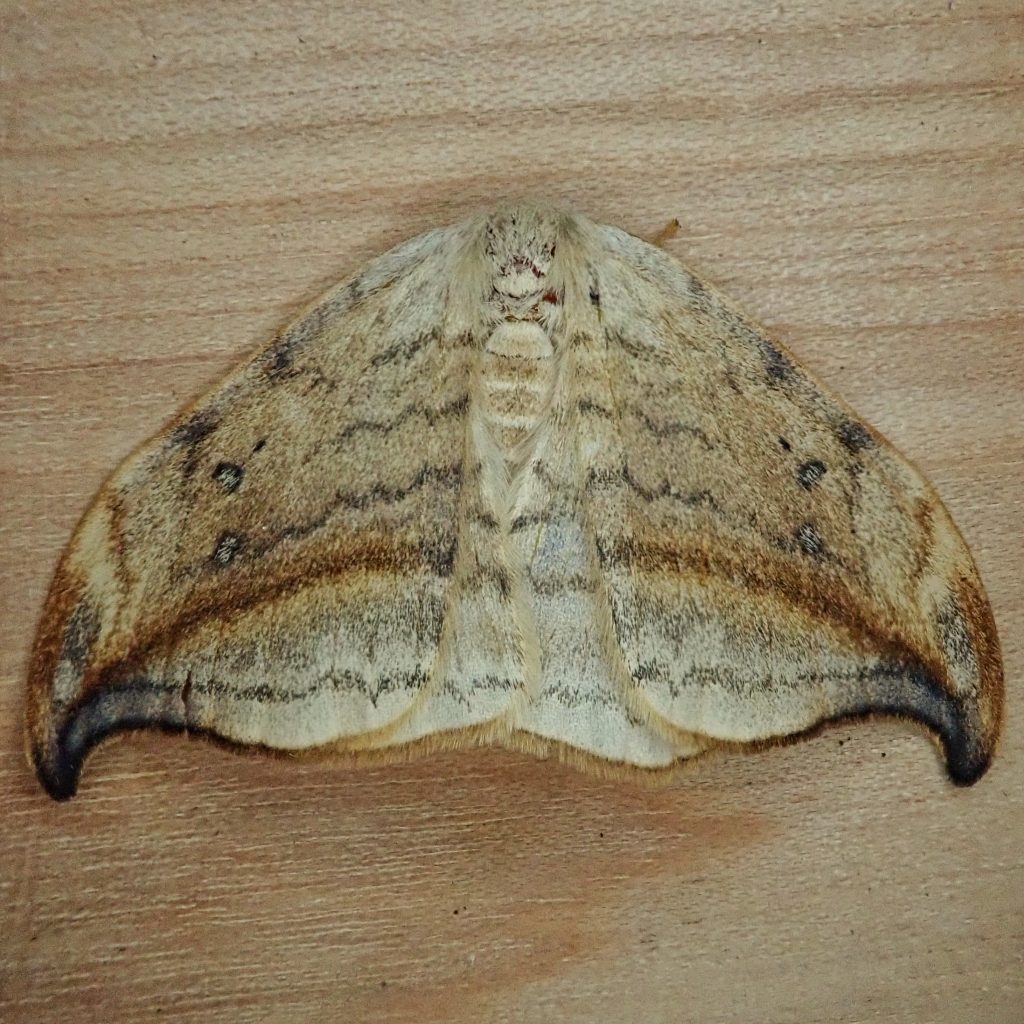
And it was luck that allowed me to find this one. Pam and I were strolling through the delphiniums at Cape Horn, a nice mixed forest of conifers and deciduous trees and shrubs, when something fluttered out from underfoot. Fortunately it only flew a short ways, and I was able to track its disappearance into a stand of grass and delphinium. I found it hunkered down at the base of one, and it must’ve felt secure because it allowed me to snap several photos.
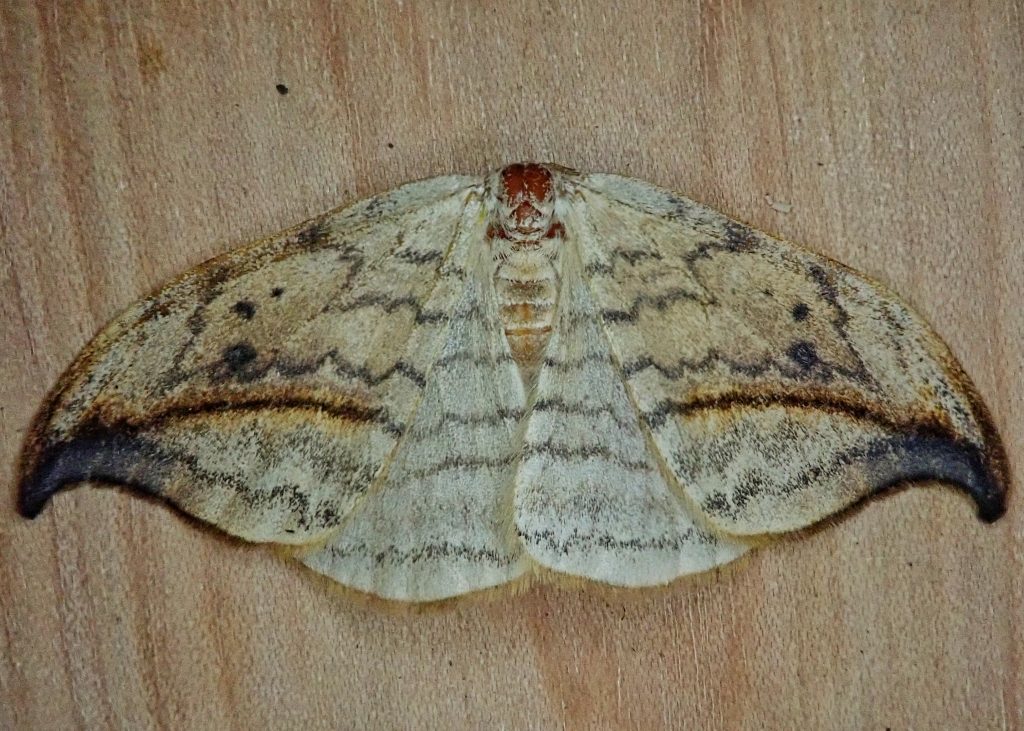
The larvae of this species make silk nests in folded leaves, and have been documented (Yack, et al, 2001) to engage in ‘acoustic duels’ with conspecific intruders to defend a nest site. During these battles they drum and scrape their mandibles against the leaf, and also scrape special anal ‘oars’ across the surface. Sometimes these ‘battles’ are protracted, but usually, though not always, the intruder retreats and leaves the resident of the nest in peace.
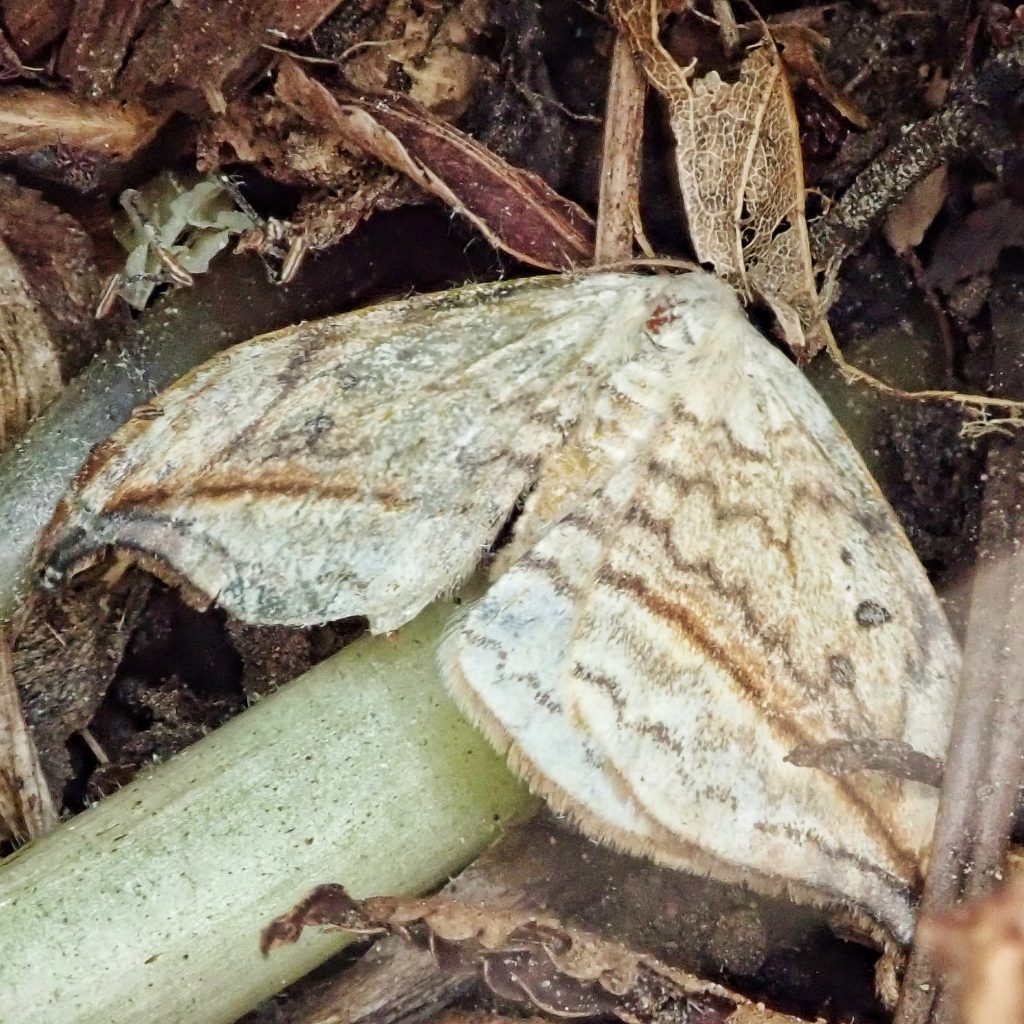
Description– Medium sized (fw length 15-21mm), tan to brownish yellow moth, with several grey, jagged transverse lines, and a thick, smooth, curved brown line that extends into the hooked tips at the apex; there are 3 small spots on each forewing; forewing margin is smooth with a brown fringe.
Similar species–Drepana bilineata has a ragged forewing margin and two dark transverse lines that run straight across the forewing.
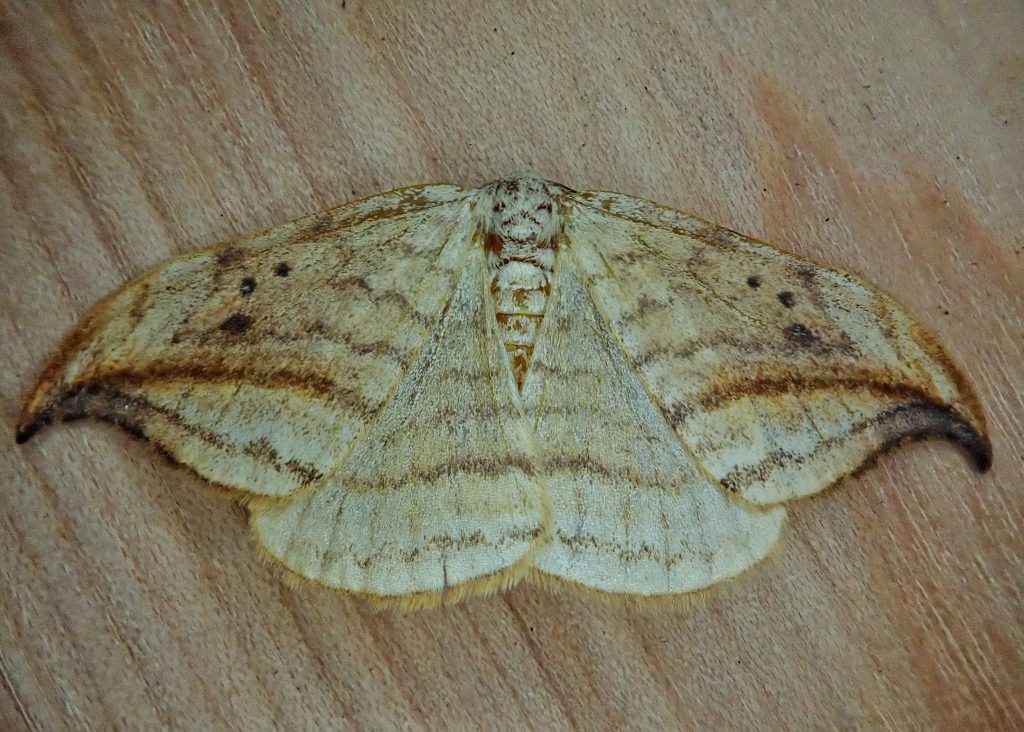
Habitat– Forests and woodlands containing alder (Alnus spp.)
Range-North American native; in our region it is found primarily west of the Cascades, in nw California, and in the Rockies, as well as in some of the forested parts of other ranges.
Eats– Larvae are specialists and feed only on alder leaves in our region; may also feed on birch leaves in other locales.
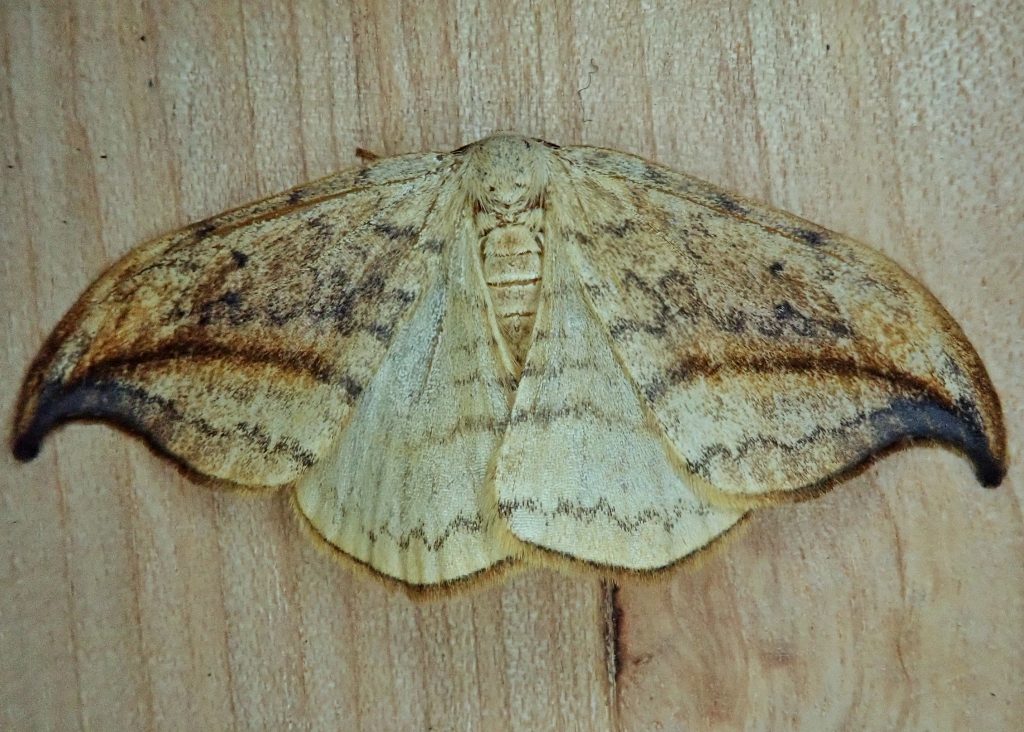
Reproduction-Univoltine in our region; May have two broods in warmer climes; larvae pupate in silk shelters within rolled leaves.
Adults active– Mid April through September, most common mid May to mid August
Etymology of names–Drepana is from the Greek for ‘scythe/sickle’, and references the shape of the forewing in this genus. The specific epithet arcuata is from the Latin for ‘bent like a bow’ and refers to the overall shape of both forewings combined.
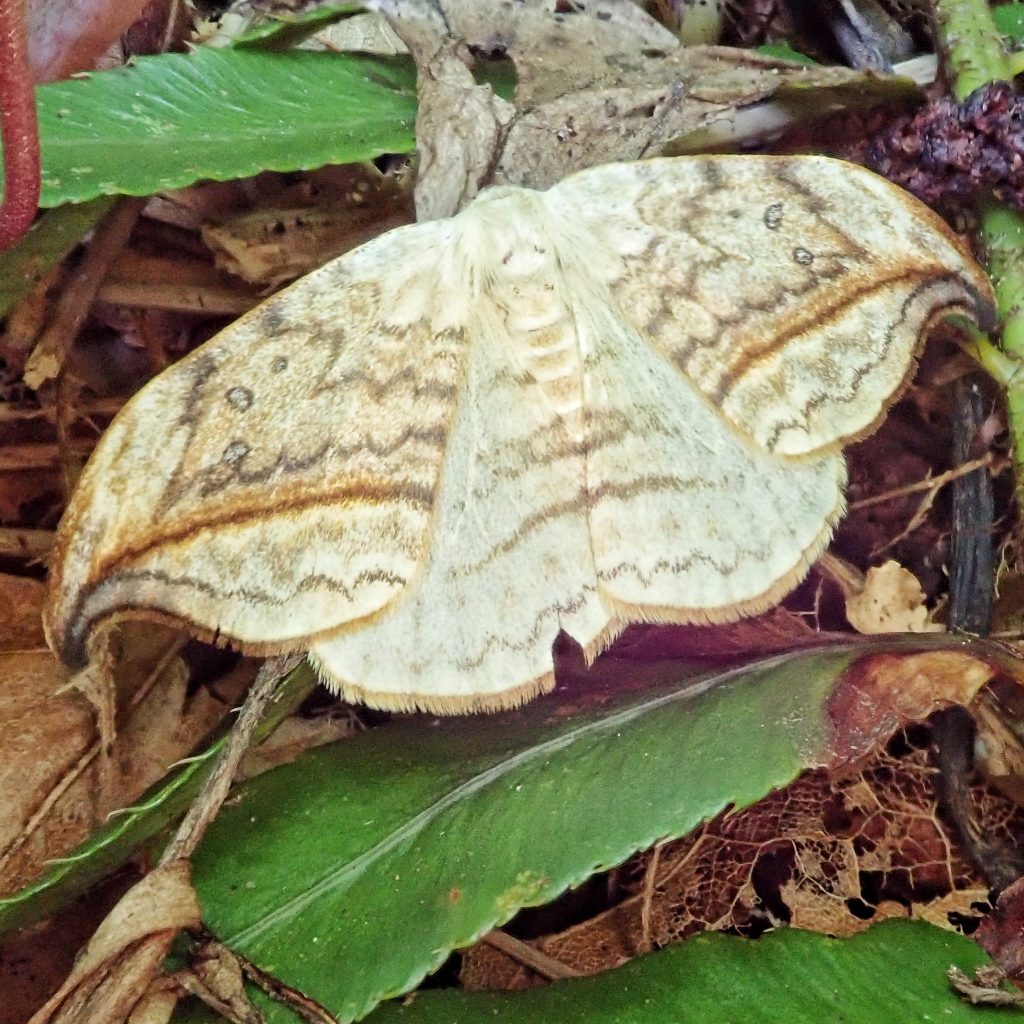
http://pnwmoths.biol.wwu.edu/browse/family-drepanidae/subfamily-drepaninae/drepana/drepana-arcuata/
https://bugguide.net/node/view/421
http://mothphotographersgroup.msstate.edu/species.php?hodges=6251
https://www.pnas.org/content/pnas/98/20/11371.full.pdf
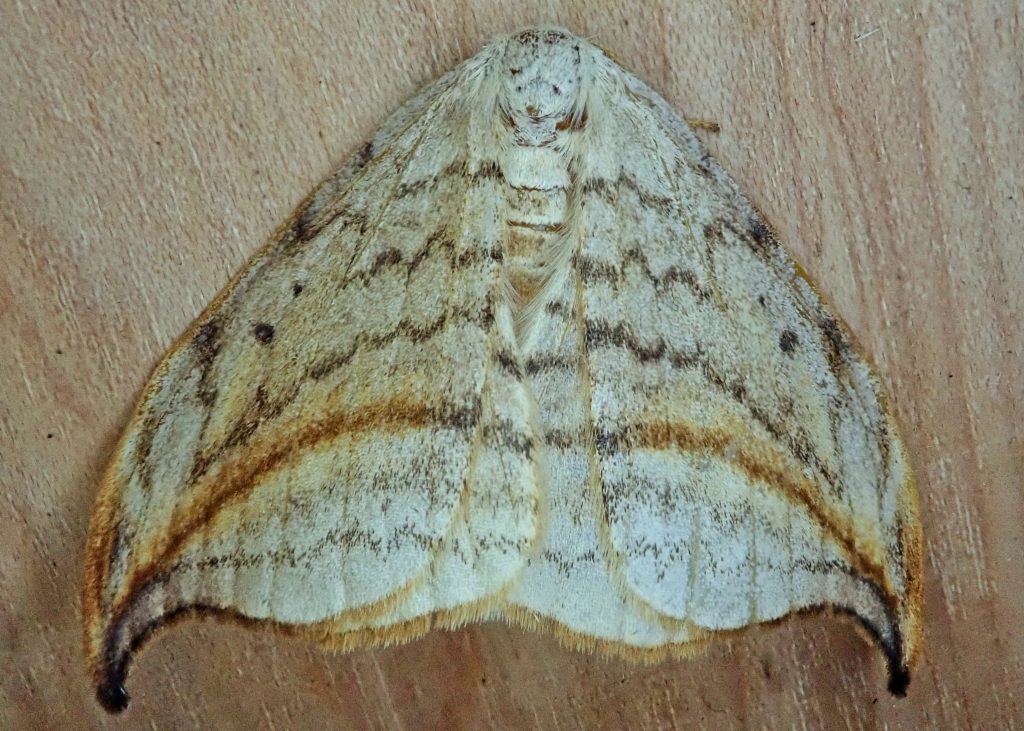
3 thoughts on “Drepana arcuata (Arched Hooktip Moth)”